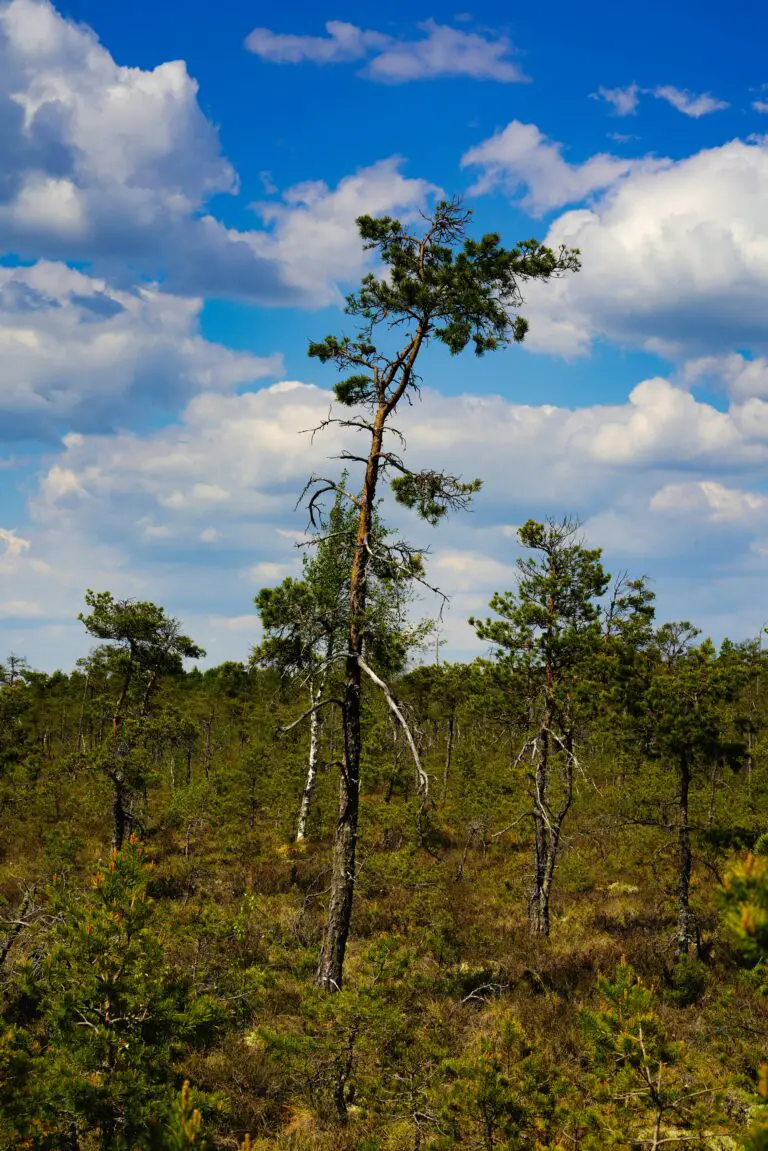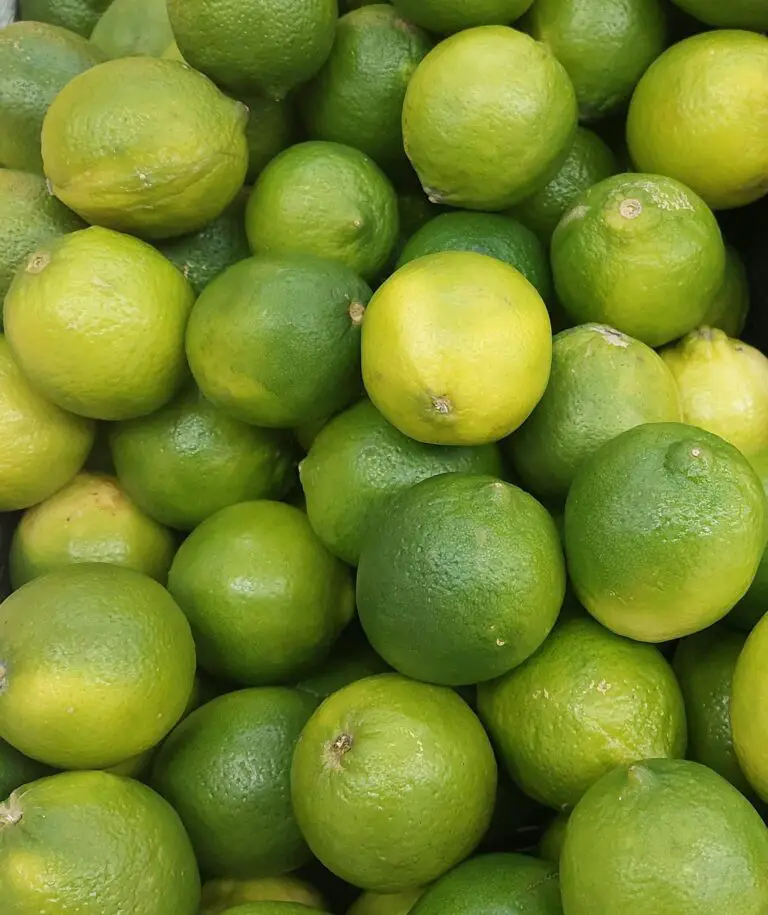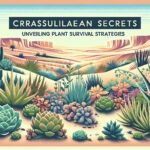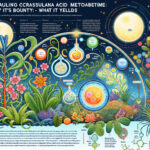Understanding Crassulacean Acid Metabolism
Have you ever wondered how some plants thrive in arid environments, where the relentless sun and scarcity of water would wilt most greenery in no time? Enter Crassulacean Acid Metabolism, or CAM for short. This ingenious biological process is nature’s equivalent to a water-saving device for certain plucky plants.
CAM was first identified when curious scientists noticed that the stonecrop family (Crassulaceae) could flourish in dry conditions where others could not. What they discovered was nothing short of a botanical breakthrough. These plants had a special night-time trick; they would open their stomata in the cool darkness to minimize water loss and store carbon dioxide as an acid. Then, during the day, they would shut those tiny openings tight to conserve every precious drop of moisture while using the stored CO2 for photosynthesis.
Let’s make it relatable. Imagine you are out camping in the desert. Your water supply is limited, and the sun is unforgiving. To make the most of your resources, you’d only open your cooler at night when the air is cooler, conserving your ice. CAM plants do the equivalent with their water reserves, making them the ultimate survivalists in harsh climates.
Ever seen a cactus standing tall amidst sand dunes or a juicy leaf of aloe vera soothing a sunburn? These are the real-life champions of the CAM process, showcasing an evolutionarily perfected blend of botany and environmental savvy. They’re the desert’s green warriors, locked in a constant dance with the sun, and emerging victorious through ancient metabolic wizardry.

To truly grasp this phenomenon, one must dive into the fundamental scientific principles that make CAM so efficient. By converting CO2 to a form of organic acid and storing it, these hardy plants can engage in photosynthesis at a time most favorable to them. It’s akin to saving leftovers for later when you know the fridge will be empty. This part of the CAM strategy isn’t just fascinating; it’s a testament to the resilience and adaptability of life.
For a deeper dive into the cellular magic that enables these plants to persist in such extreme conditions, this comprehensive overview provides all the juicy details. The intricate dance between enzymes, membranes, and energy conversion within CAM plants is a spectacle of nature’s ingenuity.
By understanding Crassulacean Acid Metabolism, we don’t just uncover the secrets of desert flora. We gain insight into the remarkable adaptability of life, the delicate balance of ecosystems, and the inspiring resilience that nature always seems to muster, no matter the environment. And isn’t that just as stunning as watching a lone cactus silhouette against a fiery sunset sky?
The Evolution of CAM Plants
Have you ever wondered how some plants manage to thrive in hot, scorching deserts where others would wither away? Enter the world of crassulacean acid metabolism or CAM, a fascinating evolutionary adaptation that’s like a botanical superpower for dry conditions. Let’s dive into this evolutionary marvel and explore how it’s helped plants in the arid regions of our planet.
Adapt or Perish: The Start of CAM
When early plants first faced arid environments, they were at a crossroads: adapt or perish. Those that developed CAM stepped onto the path of survival and prosperity. CAM plants ingeniously open their stomata at night to take in carbon dioxide while minimizing water loss – a stark contrast to most plants which do so during the day. It’s like having VIP access to a club when everyone else is queuing in broad daylight!
For a real-life example, just look at jade plants, with their lustrous leaves and stout resilience, embodying this adaptation to near perfection. They’ve turned the challenges of their environment into an opportunistic lifestyle that conserves precious resources.
Evolutionary Milestones: A Timelapse of Triumph
Imagine fast-forwarding through millions of years and witnessing the key evolutionary milestones CAM plants have hit. From the development of specialized tissues to store the night-time bounty of CO2, to the fine-tuning of their internal clocks ensuring optimal energy use, these plants have found a way to work the system to their advantage.
And it’s not just a hit in the ancient world – even modern farming has taken cues from the resilience of CAM plants. Take, for example, the sap-tapped wonders of agave plants. These hardy survivors are not just about tequila; they represent the sheer potential of adapting to harsh environments over time.
If all this talk of evolution and adaptation has you craving more knowledge, check out this fascinating video that illuminates the trajectory of plant evolution, including the likes of our incredible CAM plants.
${‘‘}
While you won’t find a grand finale here – after all, evolution is an ongoing saga – it’s clear that CAM plants have truly mastered the art of making the best out of a dry situation.
Anatomy of a CAM Plant
Imagine stumbling upon a lush, green oasis in the heart of a scorching desert. Astonishing, isn’t it? The heroes of these green havens are often plants with a special superpower: they possess the ability to survive in extreme conditions using crassulacean acid metabolism, or CAM for short. But what sets these water-wise wonders apart from their thirstier cousins?
The secret lies beneath the surface. CAM plants, like the plump leaves of a jade or the sturdy trunk of a baobab, store precious water and unleash a nocturnal magic that minimizes evaporation. When the sun sets, they open their stomata—tiny pores on the leaves—to draw in the cool night air. During these after-hours, CAM champions like the rare Aloe Bakeri kickstart their internal factories, covertly converting stored acids into energy-rich sugars without losing a drop.
This quirky trait isn’t just a random act of nature—it’s evolution in action! These plants’ fleshy leaves, hefty stems, or swollen roots act as reservoirs, safeguarding water like a camel’s hump hides fat. This clever adaptation ensures that when the sun scorches and the earth cracks, CAM plants stand tall, green, and serene.
Alongside their water-saving prowess, CAM plants exhibit another remarkable feature. They possess an internal rhythm synced to the planet’s pulse—that is, they’ve mastered timing. This botanical clockwork means they never miss a beat, syncing their stomatal openings with the most opportune moments—think of it as nature’s impeccable time-management skills!

Interested in getting up close and personal? You don’t have to venture into the desert. Many houseplants boasting CAM abilities, like bromeliads and orchids, offer a window into this wondrous world. Watching these plants is like attending a slow, graceful dance where every move is economical, deliberate, and almost imperceptible—but absolutely vital for survival.
They may not boast the showy blossoms of roses or the mighty height of oaks, but CAM plants have perfected the art of living with less. Their beauty is in their resilience and the intricate dance between their anatomy and the harsh environments they thrive in—a true testament to nature’s ingenuity.
Diverse Habitats of CAM Plants
Picture this: a scorching desert where the sun reigns with an unforgiving blaze, a serene yet impenetrable tropical forest where the canopy whispers secrets of ancient wisdom, or a coastal cliff where the sea’s salty spray dances with the breeze. These diverse ecosystems are the stages upon which an understated yet remarkable group of plants—the CAM plants—perform their ecological ballet.
CAM, or Crassulacean Acid Metabolism, is nature’s ingenious water conservation strategy.  But it’s more than just a survival trick; it’s a testament to biodiversity’s splendor. Each habitat that these plants inhabit tells a story of adaptation and ecological contribution.
But it’s more than just a survival trick; it’s a testament to biodiversity’s splendor. Each habitat that these plants inhabit tells a story of adaptation and ecological contribution.
In the parched desert, CAM plants such as the stoic Saguaro Cactus stand like green sentinels. By opening their stomata at night to minimize water loss, these plants are not just surviving; they’re carving out an oasis of life. Nestle into a cactus’s shade, and you’ll discover a microhabitat bursting with life—from the diligent ants to flitting hummingbirds, all dependent on this CAM fortress.
Slide into the lush realms of the rainforest and the story shifts. Here, epiphytic orchids and bromeliads drape the branches, absorbing water and nutrients from the humid air. Their CAM process contributes to an intricate food web. Creatures from dart frogs to treetop dwellers rely on these plants for sustenance and shelter, proving that even in the most verdant of ecosystems, CAM plants hold a vital niche.
Transition to the saline-swept cliffs by the ocean, and you’ll witness sedums and sempervivums clinging to rocky outcrops. They thrive where few dare to root, fostering biodiversity with their succulent leaves that offer a fresh reservoir for insects and birds. By anchoring the soil, they prevent erosion, making each plant a guardian of the landscape’s very architecture.
To truly grasp the ecological balance and biodiversity championed by these remarkable plants, one must delve into their symbiotic relationships. Our ecosystem is a tapestry woven from countless such interactions, as you’ll see in articles discussing the lush trails of greenery fostered by other CAM specialists.
Each of these habitats, though wildly distinct, is a testament to the CAM plants’ evolutionary craftsmanship. They don’t just adapt; they shape the environment, support a spectrum of other species, and maintain the fragile equilibrium of our planet’s ecosystems. As they stand against the elements, they enrich our world, one CAM-enabled leaf at a time.
Benefits and Uses of CAM Plants
Welcome to the world of Crassulacean Acid Metabolism or CAM, a fascinating survival mechanism that has won CAM plants a place not just in the wild but in our economies and environmental strategies. Let’s dive into the multi-layered benefits these plant powerhouses provide!
Champions of Arid Agriculture
Imagine crops that thrive in parched landscapes, barely breaking a sweat under the scorching sun. That’s the reality of CAM plants, like the succulent agave and the resilient pineapple. These plants have mastered the art of water conservation, opening their stomata at night to minimize water loss—making them ideal for drought-prone regions. By integrating CAM plants into agriculture, farmers can sustainably grow produce in areas where water is as precious as gold.
Horticultural Wonders: Green and Gorgeous
Not just tough, CAM plants come with a bonus—they’re stunning! Nurseries and home gardens are bedazzled by the likes of jade plants and aloe varietals, bringing beauty to arid and semi-arid regions. Florists and plant enthusiasts often favor these plants for their low-maintenance and exotic appearances, making them both ecological and economic gems in the horticultural industry.
A Breath of Fresh Air in Climate Change Mitigation
As the world grapples with climate change, CAM plants emerge as quiet heroes. With their ability to sequester carbon dioxide at night, they are on the front lines in the fight against rising greenhouse gas levels. Their unique photosynthetic pathway allows them to be highly efficient in capturing carbon, making them excellent partners in carbon farming initiatives and a green asset in urban landscaping.
Real-Life Impacts: Tackling Global Challenges
From the tequila-brewing agave to the air-purifying snake plant gracing our homes, CAM plants are not just surviving—they’re making a difference. By fostering these plants, we’re contributing to food security in challenging environments, promoting sustainable agriculture, and supporting biodiversity, all while beautifying our surroundings and safeguarding our planet.
Ready to see some of these incredible plants in action? Check out this insightful video:
Experiencing these benefits firsthand truly gives us a deeper appreciation for the adaptability and resilience of CAM plants. These crassulacean marvels are not just surviving in a changing world; they’re teaching us how to live and grow with it.
Conservation of CAM Plant Species
Imagine a world where plants work night shifts, diligently swapping out their typical day job for nocturnal hours to conserve precious resources. That’s the life of CAM plants, the crafty green survivors of Nature’s toughest climates. But what exactly are these hardy species, and why should their conservation cause our eco-conscious hearts to flutter?
CAM, or crassulacean acid metabolism, is their secret sauce, a fascinating adaptation that allows these plants to flourish where others would certainly falter. Through the night, CAM plants throw open the doors to carbon dioxide, stocking up for the day ahead while conserving water with the efficiency of an environmentalist’s dream. They are the ultimate reminder of life’s incredible ability to adapt—but they’re more than just biological wonders, they are ecological keystones in their natural domains.

The importance of conserving CAM plants can’t be overstated. Thriving in the most arid of landscapes, from the sun-scorched soils of deserts to the rocky crevices of isolated islands, they give life to ecosystems that would otherwise be barren wastelands. Take, for example, the iconic cacti of the American Southwest or the succulent sempervivums of high-altitude Europe, both of which are picturesque postcards of CAM resilience and the anchors of their biological communities.
Conservation efforts for these unsung heroes are blossoming. Sanctuaries and reserves have sprouted up, offering protection from the voracious appetite of urban development and the relentless march of climate change. Programs aimed at preserving the genetic diversity of CAM species are even taking root in the concrete jungles of cities, cultivating awareness and appreciation through education and community engagement.
In our fight against environmental degradation, every action counts. By championing the conservation of CAM plants, we’re not just preserving a quirky botanical quirk. We’re safeguarding the silent workhorses of dryland environments, the plants that stitch together the fragile tapestry of life in places where every drop of water is worth its weight in gold. It’s about celebrating and protecting diversity—not just for CAM plants, but for all the myriad forms of life that depend on them.
As we delve deeper into the amazing world of CAM plants, we become witnesses to their understated elegance and tenacity. Protecting these species is not just a nod to nature’s innovation; it’s a proactive step in maintaining the balance of our planet’s ecosystems. The need for conservation has never been clearer, and CAM plants stand as silent sentinels, urging us to listen to the whispers of the desert winds and act before the sands of time run out.
Frequently Asked Questions
Ever wondered how some plants survive in the driest deserts or on rocky, sunbaked cliffs? The answer lies in an extraordinary survival strategy known as crassulacean acid metabolism (CAM). Let’s delve into a few FAQs to unravel the secrets of these resilient CAM plants.
What Exactly Is Crassulacean Acid Metabolism?
Imagine doing all your grocery shopping at midnight to avoid the crowds. CAM plants do something similar; they open their “doors” (stomata) at night to take in carbon dioxide when it’s cooler, reducing water loss. During the day, they keep their stomata shut and carry out photosynthesis with their stored CO2. This savvy adaptation helps them thrive in arid conditions where other plants might throw in the towel.

Which Plants Use This Method?
Mention succulents and, voila, you’re talking about the poster children for CAM. These include your windowsill jade plant, the aloe vera you turn to for a sunburn, and the pineapple that adds zing to your fruit salad. It’s a strategy employed by over 7,000 plant species to stay lush and green while others struggle to survive.
Why Don’t All Plants Use CAM?
Think of it as a specialized tool in nature’s toolbox. Just as carpenters don’t use a saw to hammer in nails, not all plants need CAM to live. It’s a metabolic adaptation suited for environments where water is as scarce as a drop in the desert. In more humid conditions, plants have the luxury of breathing easy during the day without the risk of dehydration.
How Efficient Is CAM?
If CAM plants were cars, they would be the hybrids of the plant world—super-efficient with fuel (water). They can photosynthesize with a fraction of the water that their non-CAM cousins guzzle down, making every drop count like a treasure in the bank. This efficiency is the reason you’ll find CAM plants flaunting their succulent leaves where others barely cling to life.
Is CAM Beneficial for Humans?
Absolutely! Think about enjoying tequila at a party; you’re indirectly thanking CAM since tequila is made from agave, a CAM plant. Ever slept under a thatch roof on a tropical vacation? That’s the handiwork of CAM plants too. They’re also superstars in carbon sequestration, helping to scrub our air clean while beautifying our surroundings. Talk about a multitasking marvel!
How Do CAM Plants Impact the Ecosystem?
In the vast ecosystem jigsaw puzzle, CAM plants are like the corner pieces. They set up the framework for other life by stabilizing soil and offering refuge and nutrition. Their knack for survival in extreme conditions allows them to be foundation species, shaping ecosystems and enabling a myriad of creatures to call these harsh environments home.
Can We Learn Anything from CAM Plants?
You bet! CAM plants teach us incredible lessons in resourcefulness and resilience. Scientists are studying their secrets to possibly engineer crops that can withstand drought conditions—think about that the next time you’re chomping on a juicy piece of fruit in a dry, hot summer. These astounding plants are more than just a pretty “face” in the plant kingdom; they’re a powerhouse of innovation and adaptability.



